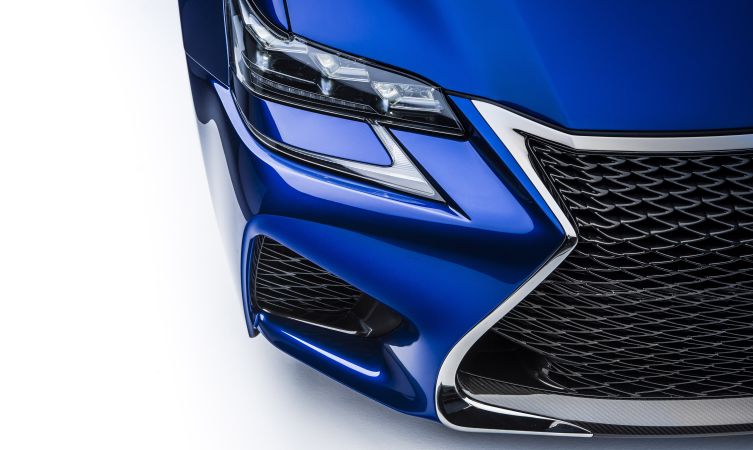Although the new Lexus GS F is based on the current GS platform, its dimensions and design features mark it out as quite a different animal from the rest of the GS line.
Designed in Japan by Toshiyuki Nagafuchi of Lexus Design Division, this top-of-the-range model is longer and wider due to its unique bodywork, and it hunkers closer to the ground on sports suspension. Meanwhile, special emphasis was placed on creating a driver-centric cockpit worthy of a high-performance machine, yet with no compromise in interior or load space.
With these factors in mind, here are some of our highlights of both the exterior and interior designs.
Exterior design
The front of the Lexus GS F is defined by a particularly strong rendition of the signature spindle grille with an F-logo mesh pattern and lower splitter moulding made from carbon fibre reinforced polymer (CFRP). However, when viewed in its entirety, aerodynamics played a key role in shaping the overall design of this high-performance car.

One of the most challenging areas to reduce drag was around the front tyres, an area where a great deal of turbulence normally occurs. To improve airflow passage, the attention to detail included designing special groove-shaped front bumper liners. In addition, special under-covers were installed beneath the engine compartment and laterally across the mid-section of the floor in order to suck the vehicle to the ground and simultaneously channel cooling air towards the rear differential.
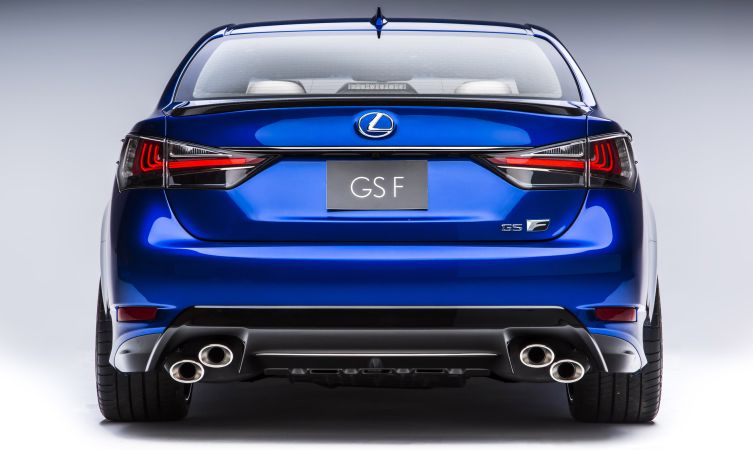
Airflow management can also be seen in the rear under-tray, which rises towards the back end to act as a diffuser, while aerodynamic stabilising fins have been strategically added to different sections of these panels to further suppress turbulence and reduce drag.
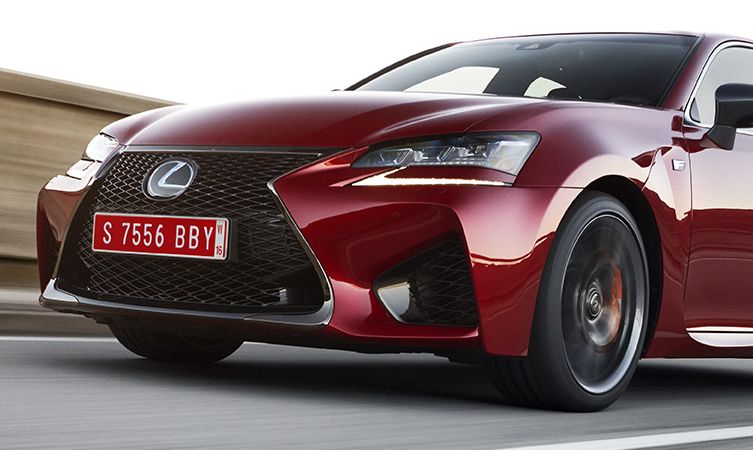
On either side of the spindle grille are large, functional inlets which channel airflow toward independent oil and transmission coolers. Having achieved its purpose, excess airflow is then able to escape down the sides of the vehicle by exiting through the flared wing outlets that are another design signature of modern ‘F’ models. These seamlessly combine with sculpted sills to give the car extra visual muscle.

Viewed in profile, the silhouette is amplified by aerodynamically styled door mirrors and B-pillars finished in a contrasting metallic finish. Extra contrasting elements can be seen in the bright orange brake calipers proudly displayed behind the 19″ forged aluminium alloys – themselves manufactured using weight-reduction technology.

The rear end continues the powerful design theme with the F-brand’s distinctive quad tailpipe arrangement and organically-shaped rear light clusters that feature black plated mouldings. This colourway is echoed in the trim garnish and subtle CFRP spoiler mounted to the boot.
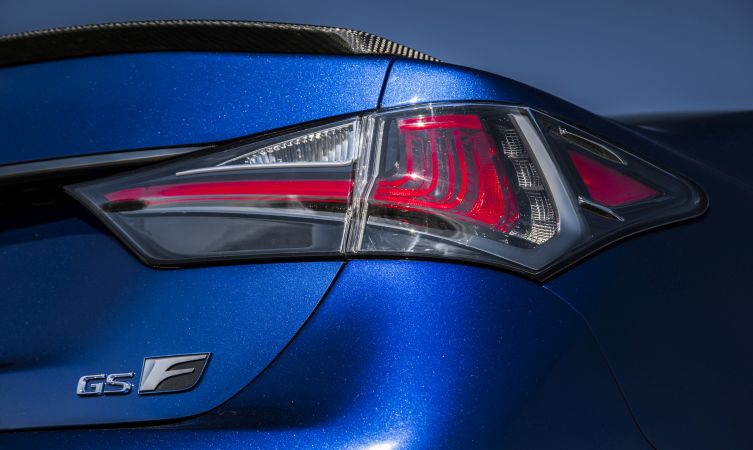
Interior design
The cabin of the Lexus GS F tastefully combines craftsmanship with world-class ergonomics and functionality, while recognising the car’s status as a high-performance machine. This is witnessed in the design and layout of the instrumentation and switchgear, where special attention has been paid to the size and legibility of the graphics to ensure instant recognition.
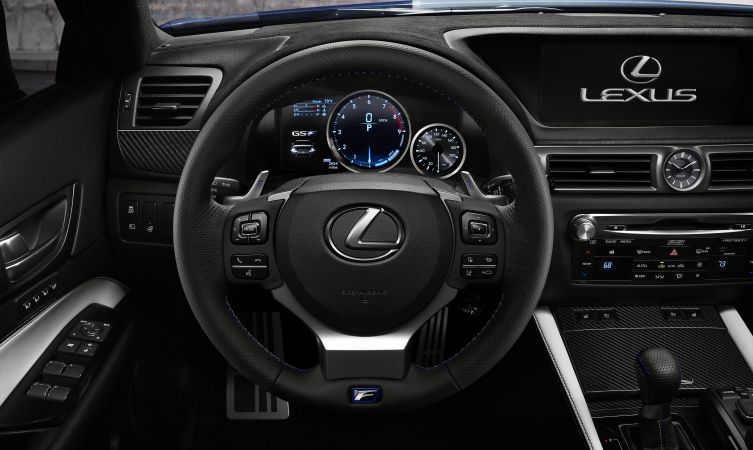
The central TFT analogue tachometer has a large diameter and silver detailing, its appearance and presented information changing according to which drive mode is selected. A colour head-up display is also used for key data such as speed, revs and gear shift position, so the driver doesn’t have to take their eyes off the road.
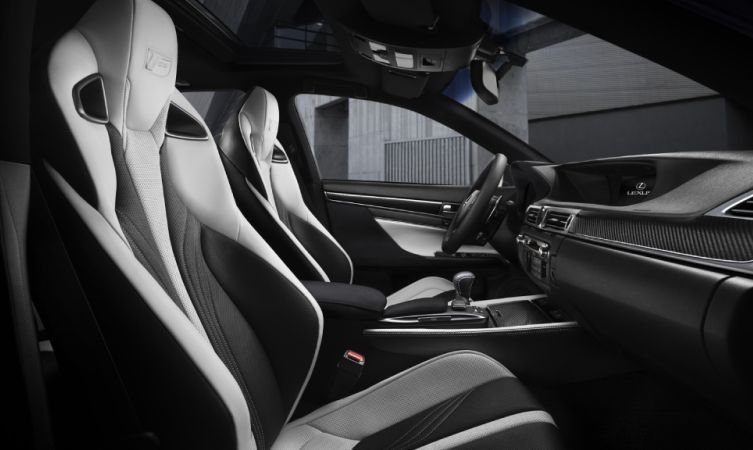
An authentic Lexus ‘F’ ambience is created by highly supportive and exclusively designed seats upholstered in semi-aniline leather. Bolstered to support the thighs, hips and back, the ergonomic shape of the front seats is designed to be particularly comfortable around the shoulders.
More than that, however, the stitching and panel arrangement has been designed to mirror the musculature of the human body in order to provide comfort and body-holding performance that minimises fatigue on long journeys. The rear seats use the same upholstery technique, while the additional comfort of rear passengers is guaranteed by the inclusion of an electrically-operated blind across the rear screen.

Exclusivity can also be seen in the F-branded three-spoke, leather-trimmed steering wheel (also shared with RC F), short-stroke shift paddles, shift knob and foot pedals. The application of high quality materials also extends to the generous use of Alcantara for the upper section of the instrument panel – secured by special alloy bolts engraved with Lexus lettering – as well as genuine carbon fibre elements across the doors, instrument panel and centre console.
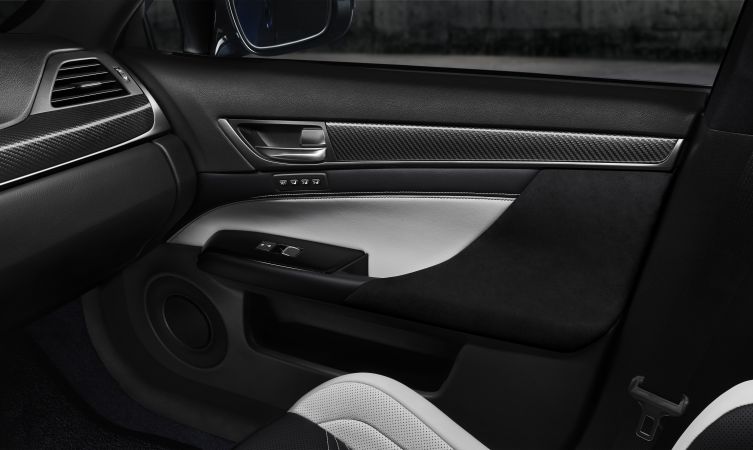
Read more: Lexus GS F V8 engine explained
Read more: Lexus GS F price and specification
Read more: 10 surprises of the Lexus GS F
All information is correct at the time of publishing.
